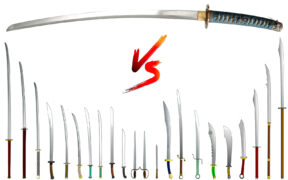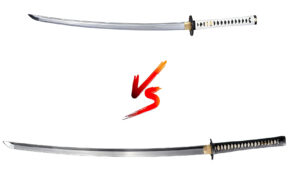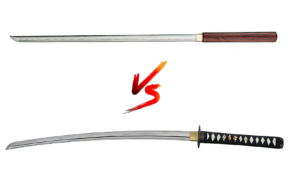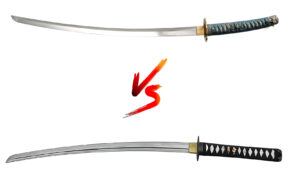Uchigatana vs Katana: What are the Main Differences?
NO AI USED This Article has been written and edited by our team with no help of the AI
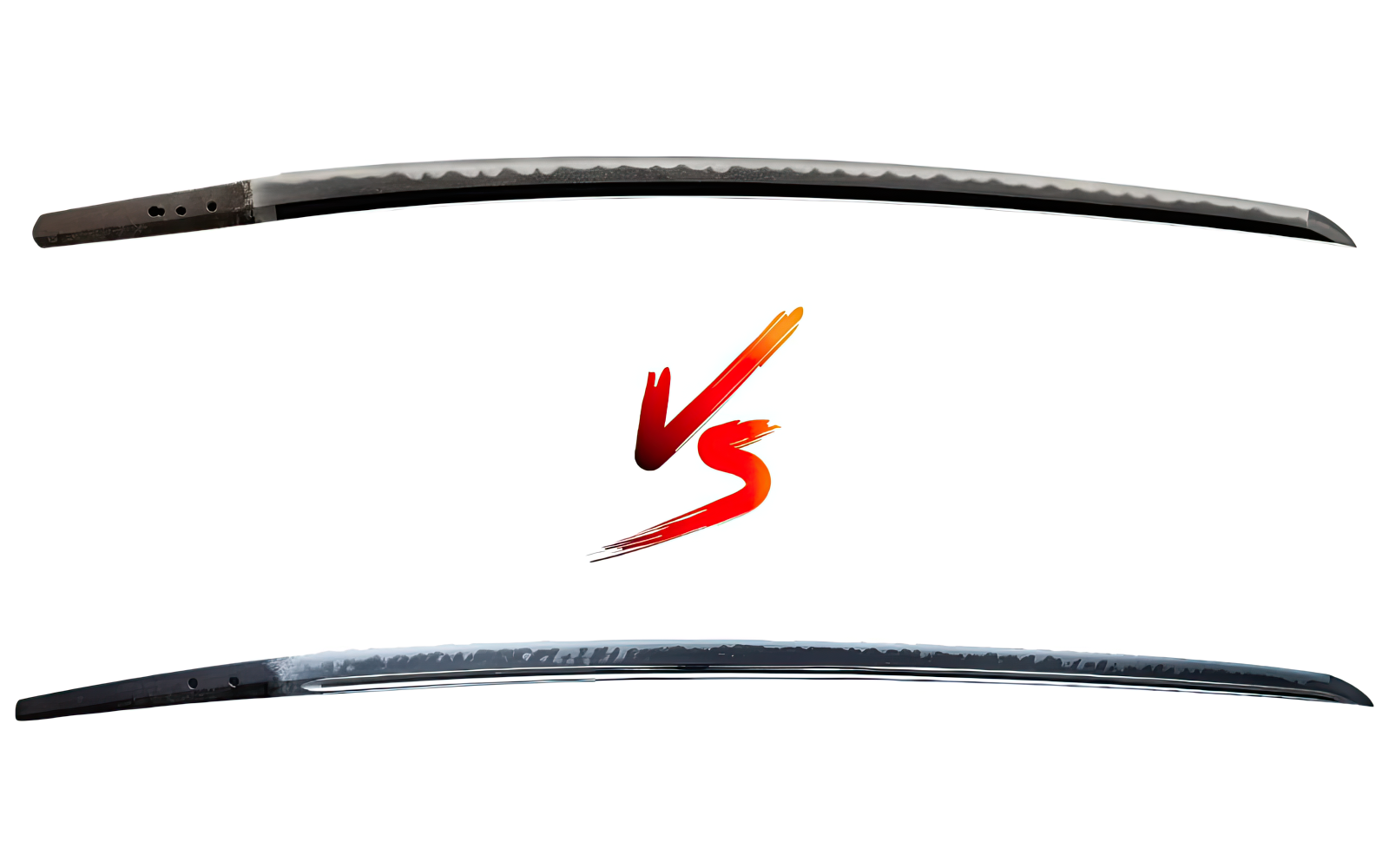
The uchigatana and katana are two different popular Japanese swords often depicted in anime such as “Samurai Champloo,” TV shows such as “Shogun,” and a variety of games. However, these terms are often used interchangeably both in Japan and abroad.
This article attempts to clarify any confusion by explaining both terms, exploring the unique designs and characteristics of both swords, how they fared in combat, and their evolution throughout history.
Are They the Same? – Terms & Meaning Explained
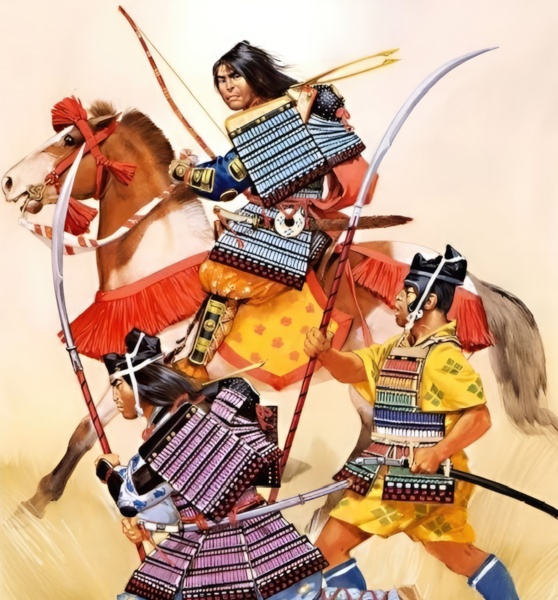
Having emerged in the late Heian period (12th century), the term “uchigatana” translates to “striking sword,”— uchi meaning “strike” and gatana meaning “sword”. This was in reference to the blades that were carried with their edges up in the obi belt, designed for quick, one-handed draws.
On the other hand, “katana” is simply the Japanese word for “sword”. Also carried with its edge up, this term is generally used to describe swords that developed during the Muromachi Period (14th-16th century), with improvements in design in terms of versatility in combat.
Design Differences
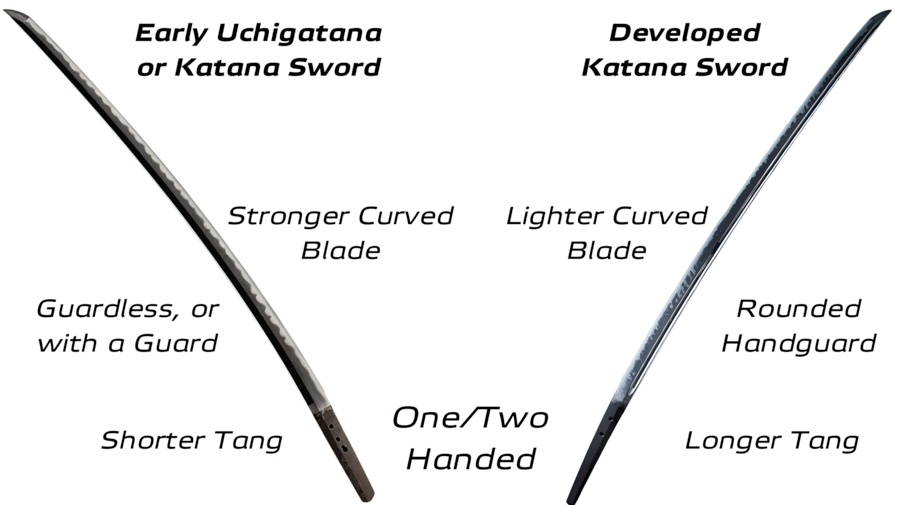
Both the uchigatana and katana are swords with a curved, single-edged blade. Their main differences lie in their curvature, length, and fittings.
Uchigatana
Early uchigatana swords had a stronger curvature, making them effective for slashing. Their shorter nakago (tang) made them suitable for one-handed use. The uchigatana had plain fittings and some even came without a guard.
Katana
Having evolved from the uchigatana, the katana evolved into a longer weapon with a softer curvature. Its longer tang allows it to be wielded with two hands. Its fittings were more elaborate, with silk or leather-wrapped handles and a tsuba (handguard) for added protection.
Combat and Fighting Techniques
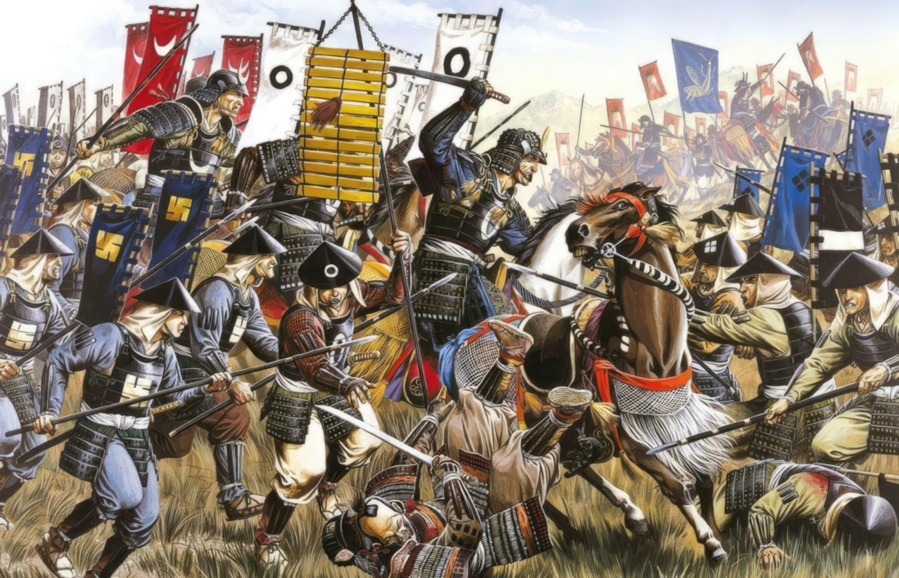
The uchigatana was designed as a secondary weapon with its stronger curvature allowing for swift slashing while on foot or horseback. Being lighter and shorter, it was easier to unsheathe from its saya (scabbard) one-handed, but its shorter length was a disadvantage against longer weapons.
The katana is also a secondary weapon but can be effectively used as a primary when needed. With its longer blade and two-handed grip, it is more versatile while remaining light enough for quick strikes, giving it better offense and defense abilities in almost any combat situation.
History of Development
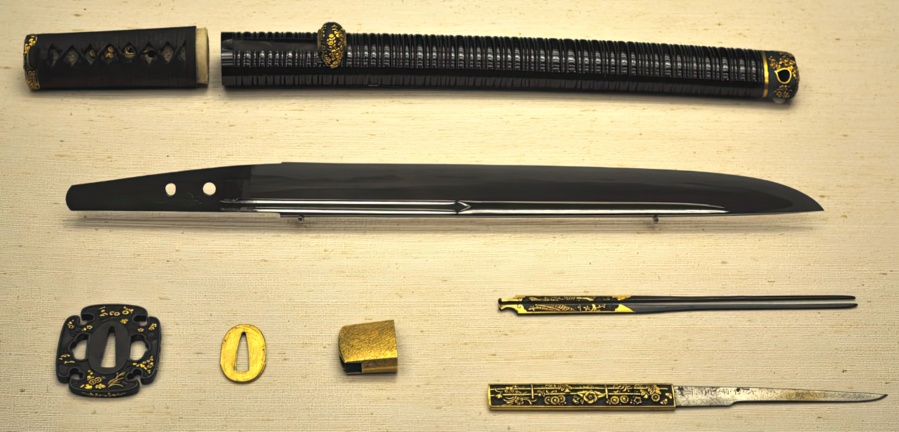
The uchigatana’s development was influenced by a tanto (dagger) called sasuga, used during the Heian Period. As the need for quick and effective combat on foot increased during the Kamakura period (12th – 14th century), the uchigatana was developed to meet the demands of infantry combat, offering a quicker draw and strike compared to the longer tachi.
Evolution to the Katana
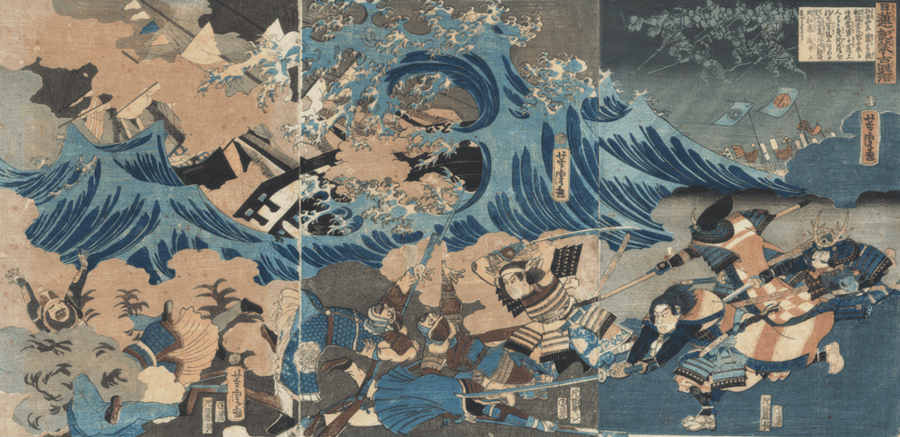
During the Muromachi period, the uchigatana evolved into the katana as there was a need for weapons better suited for close quarters combat. Loved for its speed and power in various combat situations, it was carried as a backup weapon in war next to the naginata (spear). Due to its versatility, it became the primary weapon for many samurai.
British historian Stephen Turnbull, an expert on Japanese military history says, “The main weapon was the straight-bladed spear. The familiar scene of a samurai warrior facing his opponent with a sword mainly occurs off the battlefield, in situations like revenge killings or duels.”
Cultural Significance and Modern Perceptions
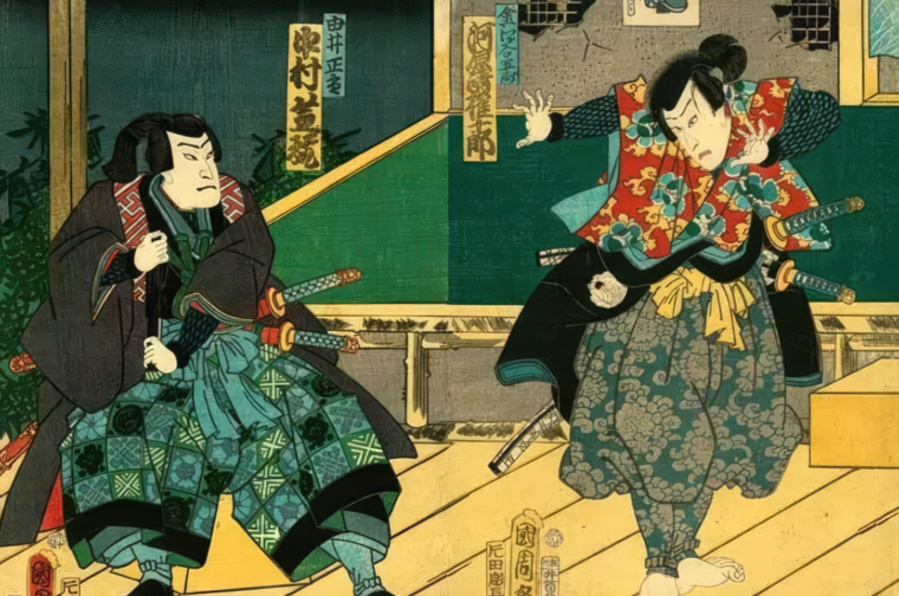
The uchigatana is not as popular as the katana outside Japan, but it has gained some recognition due to its inclusion in video games such as “Elden Ring”, where it is depicted as a shorter and quicker alternative to the katana.
On the other hand, the katana can be said to have replaced the uchigatana in terms of function and symbolic importance by the Edo period (17th – 19th century). This long period of peace allowed the katana to become more than just a weapon— evolving into the subject of many legends, samurai tales, and works of art, reaching an almost mythical status.
Even today, the katana remains as Japan’s cultural symbol and in martial arts such as Iaido.
